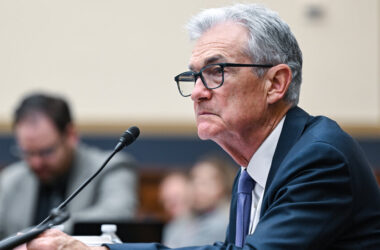Prices climbed rapidly in 2021 and 2022, straining American household budgets and chipping away at President Biden’s approval rating. But inflation cooled in late 2023, a spurt of progress that happened more quickly than economists had expected and that stoked hopes of a gentle economic landing.
Now, the question is whether the good news can persist into 2024.
As forecasters try to guess what will happen next, many are looking closely at where the recent slowdown has come from. The details suggest that a combination of weaker goods prices — things like apparel and used cars — and moderating costs for services including travel has helped to drive the cooldown, even as rent increases take time to fade.
Taken together, the trends suggest that more disinflation could be in store, but they also hint that a few lingering risks loom. Below is a rundown of the big changes to watch.
What we’re talking about when we talk about disinflation.
What’s happening in America right now is what economists call “disinflation”: When you compare prices today with prices a year ago, the pace of increase has slowed notably. At their peak in the summer of 2022, consumer prices were increasing at a 9.1 percent yearly pace. As of November, it was just 3.1 percent.
Still, disinflation does not mean that prices are falling outright. Price levels have generally not reversed the big run-up that happened just after the pandemic. That means things like rent, car repairs and groceries remain more expensive on paper than they were in 2019. (Wages have also been climbing, and have picked up more quickly than prices in recent months.) In short, prices are still climbing, just not as quickly.
What inflation rate are officials aiming for?
The Federal Reserve, which is responsible for trying to restore price stability, wants to return price increases to a slow and steady pace that is consistent with a sustainable economy over time. Like other central banks around the world, the Fed defines that as a 2 percent annual inflation rate.
What caused the 2023 disinflation surprise?
Inflation shocked economists in 2021 and 2022 by first shooting up sharply and then remaining elevated. But starting in mid-2023, it began to swing in the opposite direction, falling faster than widely predicted.
As of the middle of last year, Fed officials expected a key measure of inflation — the Personal Consumption Expenditures measure — to end the year at 3.2 percent. As of the latest data released in November, it had instead faded to a more modest 2.6 percent. The more timely Consumer Price Index measure has also been coming down swiftly.
The surprisingly quick cooldown started as travel prices began to decelerate, said Omair Sharif, founder of Inflation Insights. When it came to airfares in particular, the story was supply.
Demand was still strong, but after years of limited capacity, available flights and seats had finally caught up. That combined with cheaper jet fuel to send fares lower. And while other travel-related service prices like hotel room rates jumped rapidly in 2022, they were increasing much more slowly by mid-2023.
The next change that lowered inflation came from goods prices. After jumping for two years, prices for products like furniture, apparel and used cars began to climb much more slowly — or even to fall.
The amount of disinflation coming from goods was surprising, said Matthew Luzzetti, chief U.S. economist at Deutsche Bank. And, encouragingly, “it was reasonably broad-based.”
The inflation relief came partly from supply improvements. For years, snarled transit routes, expensive shipping fares and a limited supply of workers had limited how many products and services companies could offer. But by late last year, shipping routes were operating normally, pilots and flight crews were in the skies, and car companies were churning out new vehicles.
“The supply side is at work,” said Skanda Amarnath, executive director at the worker-focused research group Employ America.
What could be the next shoe to drop?
In fact, one source of long-awaited disinflation has yet to show up fully: a slowdown in rental inflation.
Private-sector data tracking new rents soared early in the pandemic but then slowed sharply. Many economists think that pullback will eventually feed into official inflation data as renters renew their leases or start new ones — but the process is taking time.
“We’re likely to see more moderation in rent,” said Laura Rosner-Warburton, senior economist and founding partner at MacroPolicy Perspectives.
Because a bigger rent cooldown remains possible and goods price increases could keep slowing, many economists expect overall consumer price inflation to fall closer to the Fed’s goal by the end of 2024. There is even a risk that it could slip below 2 percent, some think.
“It’s a scenario that deserves some discussion,” Ms. Rosner-Warburton said. “I don’t think it’s the most likely scenario, but the risks are more balanced.”
What could go wrong?
Of course, that does not mean Fed officials and the American economy are entirely out of the woods. Falling gas prices have been helping to pull inflation lower both overall and by feeding into other prices, like airfares. But fuel prices are notoriously fickle. If unrest in gas-producing regions causes energy costs to jump unexpectedly, stamping inflation out will become more difficult.
Geopolitics also carry another inflation risk: Attacks against merchant ships in the Red Sea are messing with a key transit route for global commerce, for instance. If such problems last and worsen, they could eventually feed into higher prices for goods.
And perhaps the most immediate risk is that the big inflation slowdown toward the end of 2023 could have been overstated. In recent years, end-of-year price figures have been revised up and January inflation data have come in on the warm side, partly because some companies raise prices at the beginning of the new year.
“There is a bunch of choppiness coming,” Mr. Sharif said. He said he’ll closely watch a set of inflation recalculations slated for release on Feb. 9, which should give policymakers a clearer view of whether the recent slowdown has been as notable as it looks.
But Mr. Sharif said the overall takeaway was that inflation looked poised to continue its moderation.
That could help to pave the path for lower interest rates from the Fed, which has projected that it could lower borrowing costs several times in 2024 after raising them to the highest level in more than 22 years in a bid to cool the economy and wrestle inflation under control.
“There’s not a lot of upside risk left, in my mind,” Mr. Sharif said.




